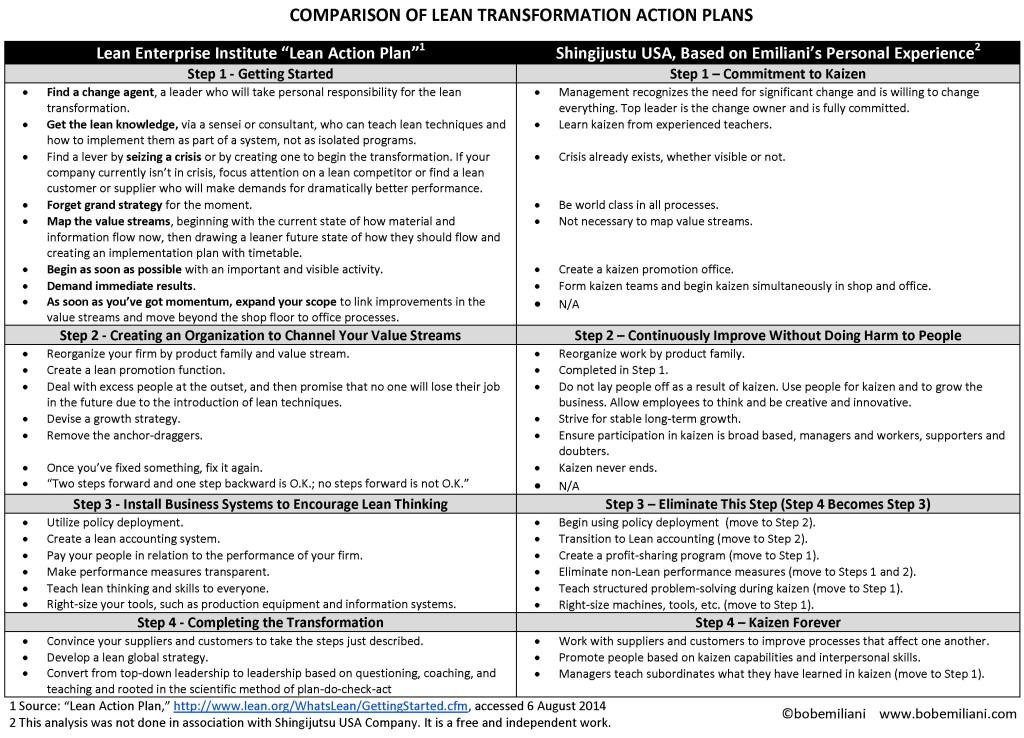In a previous post, Nakao-san and Shingijutsu-Kaizen, I described some of what I learned observing Mr. Nakao lead kaizen for several days at a company in Connecticut.
As I reflect back on that, as well as my previous experiences as a team member and team leader in Shingijutsu kaizens, I think about the different approaches to Lean transformation. There are many consultants and trainers who teach kaizen and provide Lean transformation support. Often, the specific approach they use is proprietary. Some organizations, such as the Lean Enterprise Institute, identify “crucial steps” for getting started on their web site.
So, as a thinking exercise, I though it would be interesting to compare LEI’s “action plan” to what I perceive to be Shingijutsu’s action plan based on my personal experience and nothing more. The table below shows what I found.
Please, again, note that what is contained on the right side of the table is based on my personal experience, and not on any documentation, communication, or formal or informal discussion with Shingijutsu USA.
As you can see, there is significant differences in Lean transformation action plans.
However, we must recognize the limitations of this simple analysis. The Lean Enterprise Institute is trying to provide a helpful action plan for Lean transformation to interested persons, some of whom will follow it because LEI is an influential organization. Yet, in my view, it is a faulty, if not wrong approach.
Shingijutsu’s approach to Lean transformation has kaizen as its core, yet it offers several other services that are also necessary to improve flow in the shop and office (see Shingijutsu-Kaizen Conference summaries for Day 1 and Day 2).
At minimum, this simple analysis helps people who are unfamiliar with Shingijutsu grasp their approach to the beginning activities that are necessary to transform an organization. In addition, you can see that there is more than one approach to Lean transformation, and they while they share some similarities, there are also significant differences.

